Day 7, Wednesday afternoon

Lingyin Temple, Hangzhou
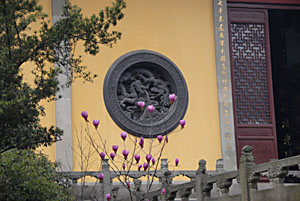
Photo by Gene Field
|
Day 7, Wednesday afternoon |
|
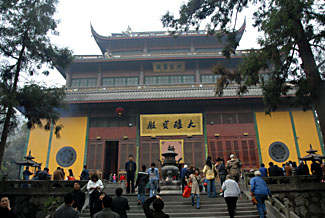 Photo by Gene Field
Photo by Gene Field
|
After getting our fill of tea, we climbed back in the bus and headed to the Mountain Beyond Mountain Restaurant for lunch. Then we set off for Lingyin Temple. Lingyin, which means "Soul's Retreat," or "Temple of Inspired Seclusion is a famous Buddhist monastery next to Lingyin Mountain northwest of West Lake in Hangzhou. It was originally built in 326 A.D. but has been rebuilt and restored many times since then. The temple was founded by an Indian monk, Hui Li, and at one time there were 3000 monks in residence.
|
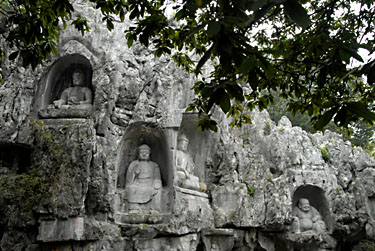
Photo by Lucie Field |
Before getting to the temple we walked past the caves of Feilai Hill. After first passing a carved stone pagoda we came upon the caves and rock surfaces which have over 300 stone Buddhist carvings and statues that date back several hundred years. One of the most famous of the carved statues is that of the Laughing Buddha. The carvings were large, intricate and very beautiful. |
 Photo by Gene Field
Photo by Gene Field |
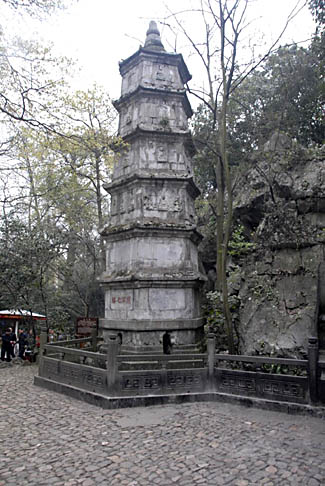 Photo by Gene Field
Photo by Gene Field |
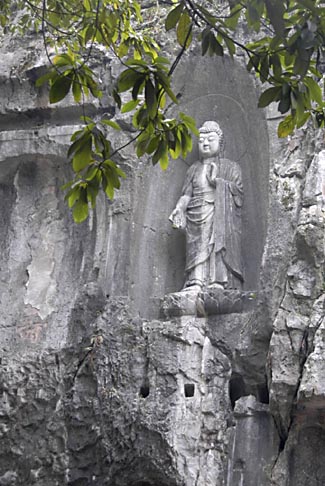 Photo by Gene Field
Photo by Gene Field |
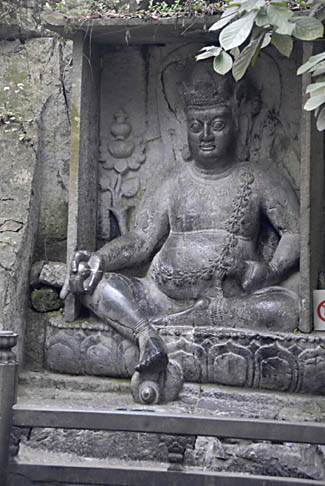 Photo by Gene Field
Photo by Gene Field |
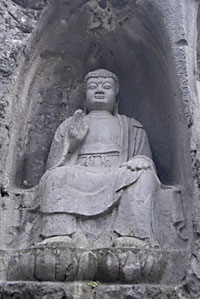 Photo by Gene Field
Photo by Gene Field |
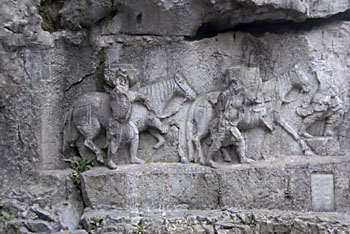
Photo by Gene Field |
|
The temple complex itself consisted of many buildings, all gorgeously designed and painted, rising up a hill. One of the first buildings that we came to was the Hall of the Heavenly Kings. Inside is a huge statue of the Maitreya, or Laughing Buddha, carved from camphor wood and covered in gold. Also in this building is a statue of Sakyamuni, carved from camphor wood also, and standing more than nineteen meters tall. The hall itself is over thirty-three meters tall, one of the tallest one-story buildings in China. Sakyamuni is another name for the Buddha and means sage of the Sakya clan. His father was king of the Sakyas in India near Nepal. This is one of the largest wooden statues in China and is also covered in gold. |
||

Photo by Gene Field |
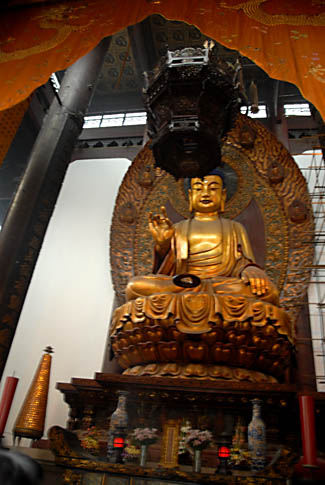
Photo by Gene Field |
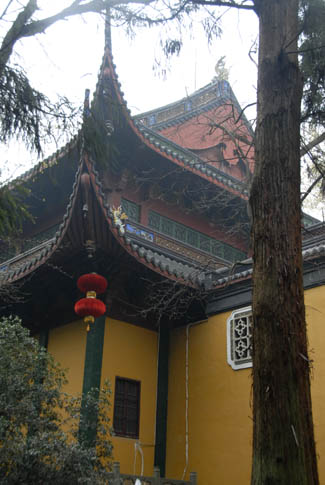
Photo by Gene Field |
 Photo by Gene Field
Photo by Gene Field
|
The walls and ceilings were intricately painted and decorated. There were many other courtyards, buildings and pavilions and there were a number of tourists, a few monks that could be seen, workmen who were painting and restoring buildings, and Chinese people who were there for religious purposes.
|
 Photo by Gene Field
Photo by Gene Field |

Photo by Lucie Field |
 Photo by Gene Field
Photo by Gene Field |
Exploring further up the hill I found the library complete with card catalog and an electronic security system just inside the door. I felt right at home. The view outside through fancy grilled windows was one of beauty and serenity.
|
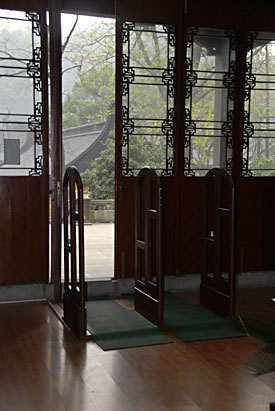 Photo by Gene Field
Photo by Gene Field |

| 1 July 2006 | [China Trip index |Next] |